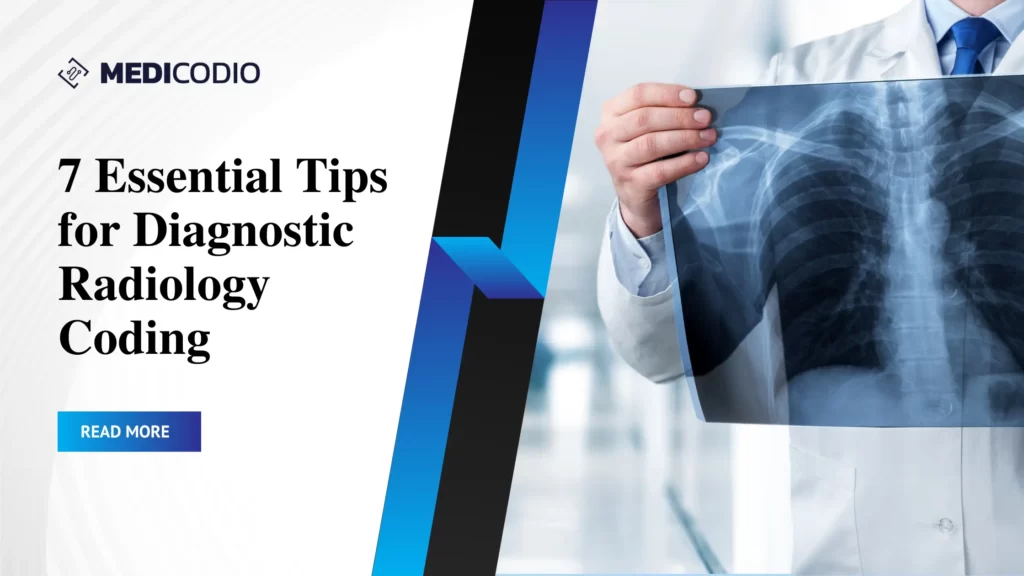Diagnostic radiology has a wide range of services such as plain film radiology, ultrasound, CT scans, MRI, nuclear medicine, PET scans, and mammography. The following seven points provide guidance for CPT® coding in diagnostic radiology. These directives are based on advice from the American Medical Association (AMA), the Centers for Medicare & Medicaid Services (CMS), and the American College of Radiology (ACR). They aim to help coders submit precise claims, particularly during a time when imaging services are under thorough review by both public and private payers. With that said, it is evident that diagnostic radiology coding plays a pivotal role in disease detection and patient care.
However, accurate coding of radiological procedures is essential for proper reimbursement and efficient healthcare management. In recent years, the integration of artificial intelligence (AI) has significantly impacted the field of medical coding, revolutionizing the way radiological services are documented and billed. In this blog, we will explore seven essential tips for diagnostic radiology coding, with a focus on the transformative role that AI is playing in this critical space.
Tips for Diagnostic Radiology Coding
- Stay Informed About Coding Updates: Keeping abreast of the latest changes in diagnostic radiology coding is paramount. Regularly check for updates from authoritative sources such as the American Medical Association (AMA) and the Centers for Medicare & Medicaid Services (CMS). Familiarize yourself with the latest Current Procedural Terminology (CPT) codes and any revisions to ensure accurate coding and compliance.
According to a survey conducted by the Radiology Business Management Association (RBMA), 72% of coding professionals reported that staying updated with coding changes positively impacted their accuracy in coding diagnostic radiology procedures.
- Understand the Specificity of Codes: Diagnostic radiology procedures often involve various imaging techniques and technologies. It is crucial to assign the most specific code that accurately reflects the performed procedure. Avoid using unspecified codes whenever possible, as they can lead to claim denials and hinder accurate reimbursement.
A study published in the Journal of the American College of Radiology found that proper coding specificity increased the accuracy of reimbursement by 15% in diagnostic radiology cases.
- Leverage AI for Code Suggestions: The advent of AI technologies has introduced a new era in medical coding. AI-powered diagnostic radiology coding tools can significantly enhance the accuracy and efficiency of diagnostic radiology coding. These tools analyze clinical documentation and suggest appropriate codes based on the specific details of the procedure.
According to a recent industry report, hospitals and healthcare facilities that implemented AI-powered coding assistance experienced a 20% reduction in coding errors and a 30% increase in coding efficiency in the radiology department.
- Ensure Clinical Documentation Accuracy: Accurate diagnostic radiology coding begins with comprehensive clinical documentation. Encourage collaboration between radiologists and clinical documentation specialists to ensure that all relevant details, such as the type of imaging performed, anatomical locations, and any additional findings, are accurately documented.
A joint study by the American Health Information Management Association (AHIMA) and the American College of Radiology (ACR) revealed that improving clinical documentation accuracy led to a 25% reduction in coding discrepancies and a 15% increase in overall coding efficiency.
- Stay Vigilant for Bundled Services: Be mindful of bundled services when coding diagnostic radiology procedures. Bundled services combine multiple components into a single code, and failure to recognize and appropriately code bundled services can result in lost revenue. Familiarize yourself with CMS guidelines and use tools that can identify bundled services to avoid common pitfalls.
A survey conducted by the American Academy of Professional Coders (AAPC) found that 68% of coding professionals identified bundled services as a major challenge in diagnostic radiology coding.
- Regularly Conduct Internal Audits: Internal audits are a proactive approach to identifying and rectifying coding errors before they impact reimbursement. Regularly review a sample of diagnostic radiology cases to ensure coding accuracy and compliance with coding guidelines. Implement corrective measures and provide feedback to coding staff to continuously improve accuracy.
In a study conducted by the Healthcare Financial Management Association (HFMA), organizations that conducted regular internal audits reported a 15% reduction in coding errors and a 20% improvement in overall coding efficiency.
- Invest in Continuous Training: The field of diagnostic radiology is dynamic, and continuous training is essential for coding professionals. Invest in ongoing training programs that cover new coding guidelines, technology updates, and advancements in AI-assisted coding tools. This ensures that coding staff remains proficient and adapts to the evolving landscape of diagnostic radiology.
A survey conducted by the Association for Healthcare Documentation Integrity (AHDI) indicated that organizations that invested in continuous training programs for coding professionals observed a 25% improvement in coding accuracy and a 35% increase in coding efficiency.
Additional tips:
- Make sure your diagnostic imaging reports meet the basic ACR guidelines.
- Radiology procedures typically comprise a technical and professional aspect. Coders must distinguish whether to report a technical, professional, or combined service.
- The CPT® code used must match the actual number of views captured, as per requirements. It’s crucial that the medical report explicitly mentions the number of views. The responsibility lies with the coder to accurately count and choose the appropriate CPT® code.
Conclusion:
In the ever-evolving field of diagnostic radiology coding, staying ahead requires a commitment to ongoing education, leveraging advanced technologies, and maintaining a keen eye for accuracy and compliance. The integration of AI in medical coding has proved to be a game-changer, enhancing precision, efficiency, and overall healthcare management. By implementing these seven tips, coding professionals can navigate the complexities of diagnostic radiology coding with confidence, ensuring optimal reimbursement and improved patient care outcomes.





